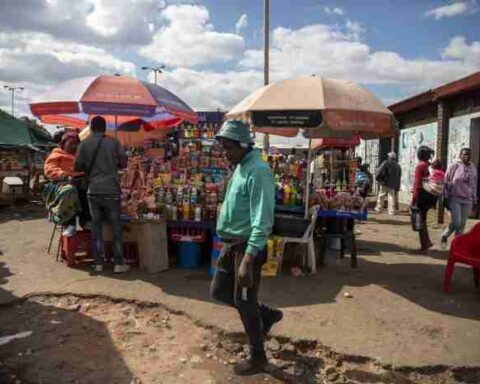The internet could be a very positive and empowering step towards education, organisation and participation in a meaningful society.
The digital divide: Africa’s growing issue
Now, more than ever, the world is starting to recognise the essential role internet connectivity plays in helping to overcome some of the world’s biggest issues, including education, healthcare and security. Connectivity is a tool that can empower people and strengthen communities, yet access to secure and reliable connectivity remains a privilege, with the digital divide increasing every year.
The digital divide is particularly prominent in Africa, where more than 100 million people within our extensive footprint, currently live without access to quality connectivity, expecially those in sub-Saharan Africa. In Nigeria alone, more than 20 million people are not covered by any kind of network.
My opinion is based on how we have sought to address this issue.
We have looked at the range of options and what we have done is to work in partnership with the people of Africa to empower growth, protect communities and unlock opportunities for individuals, businesses, and governments by creating better connections across the continent. We do this by combining our local presence with strategic partnerships, working with governments, Mobile Network Operators (MNOs) and Tower Companies on the ground, as well as non-for-profit organisations.
Barriers prohibiting progress
There are a range of barriers impacting connectivity across Africa. This can range from unclear regulatory regimes, high licensing fees, to prohibitive installation costs due to harsh terrain that is difficult to access.
For example, a lack of high-speed connectivity is preventing a large proportion of African students from accessing the educational resources they need to fully participate in the modern digital world. It is crucial that we start to prioritise this issue, or the digital gap will continue to widen, particularly across sub-Saharan Africa where terrestrial networks are limited.
As a leading KA-band high throughput satellite capacity partner to the communications industry across EMEA, we sought to combat this growing issue – by combining our local presence, with strategic partnerships. One example of this is our partnership with the Global Partnership for Education (GPE) to address barriers to girls’ education. The initiative uses social marketing as a tool to drive awareness and behaviour change around social norms keeping girls from school.
Establishing rural connectivity
We believe strategic partnerships are the key to closing Africa’s digital divide, which is why we seek out opportunities to leverage our satellite technology to help improve access to rural connectivity. Over the past year, we have launched several new partnerships to help operators and partners expand their networks.
We have recently partnered with Clear Blue Technologies to accelerate the rural rollout of low-cost connectivity solutions in areas where network coverage and broadband services have been limited or non-existent. Everyone is entitled to a more connected life, and this partnership is expected to deliver coverage to 400 million people living in remote areas within 3-5 years.
We also recently launched our own service for rural connectivity, providing high-performance and cost-effective 2G, 3G and 4G solutions to remote and hard-to-reach areas across sub-Saharan Africa. This enables MNOs and other partners to provide reliable cellular service to the 100 million people living in these challenging locations that would otherwise be impossible to reach using traditional terrestrial infrastructure.
Improving access to education
Since 2020, 90% of children living in sub-Saharan Africa did not have access to a computer and around 80% did not enjoy a basic internet connection. Urgent investment is required to bridge the digital divide currently preventing children and young people from accessing quality, digital learning and opportunities online.
Through strategic partnerships, we are enabling disconnected children living in sub-Saharan Africa to break down barriers to education and help them flourish.
For example, our project iMlango, has been a ground-breaking partnership in rural Kenya that has improved education outcomes in maths, literacy, and life skills for marginalised school children in Kenya. The success of this project is a testament to the powerful effect strategic partnerships can have in helping individuals achieve their full potential.
Through the project, over 180,000 students have benefited from real time adaptive content, and thousands of teachers have been trained and supported to implement technology in their school environment. Every child has the right to quality education, and through partnerships and projects like iMlango, young students can start participating in the modern digital world and what it has to offer.
Collective action: the ingredient to real change and progress
Collective action is how we will spark real change, and we believe African governments must continue to collaborate with telecom and satellite services operators, to improve access to education, work, and medicine. Satellite technology has the power to ignite real change in areas that are the most affected by the ever-growing digital divide, and we believe there is a real opportunity for the industry to play a key part in the global economic recovery. We must act now.







